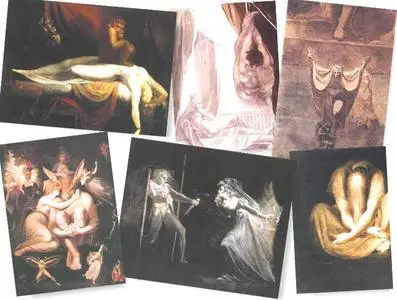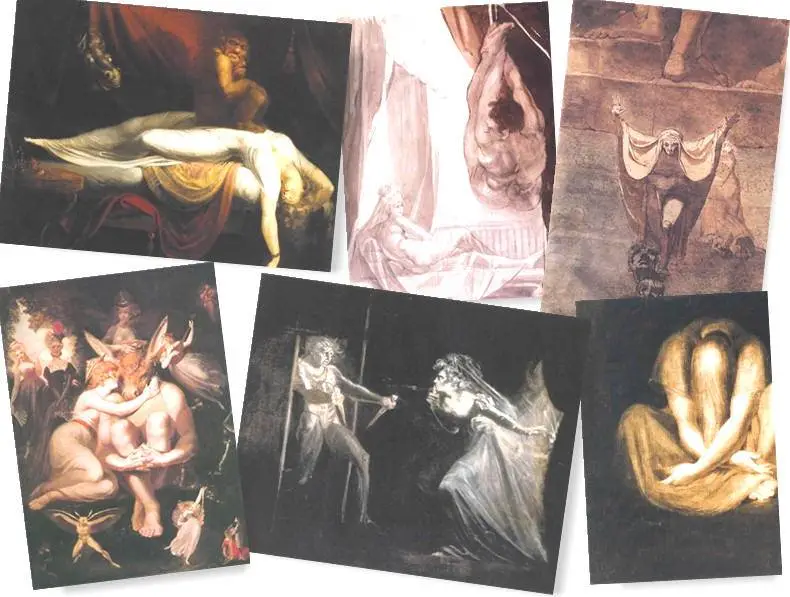Art by Henry Fuseli
13 JPG | up to 800x1000 | 1,7 Mb
13 JPG | up to 800x1000 | 1,7 Mb
Henry Fuseli (in German, Johann Heinrich Füssli; February 7, 1741 – April 16, 1825) was a British painter, draughtsman, and writer on art, of German-Swiss origin.
He was born in Zürich, Switzerland, the second of eighteen children. His father was Johann Caspar Füssli, a painter of portraits and landscapes, and author of Lives of the Helvetic Painters. He intended Henry for the church, and sent him to the Caroline college of Zurich, where he received an excellent classical education. One of his schoolmates there was Johann Kaspar Lavater, with whom he became close friends.
After taking orders in 1761 Fuseli was forced to leave the country as a result of having helped Lavater to expose an unjust magistrate, whose powerful family sought revenge. He first travelled through Germany, and then, in 1765, visited England, where he supported himself for some time by miscellaneous writing. Eventually, he became acquainted with Sir Joshua Reynolds, to whom he showed his drawings. Following Sir Joshua's advice he devoted himself wholly to art. In 1770 he made an art-pilgrimage to Italy, where he remained till 1778, changing his name from Füssli to Fuseli, because it was more Italian-sounding.
Early in 1779 he returned to Britain, taking in Zürich on his way. He found a commission awaiting him from Alderman Boydell, who was then organizing his famous Shakespeare gallery. Fuseli painted a number of pieces for Boydell, and published an English edition of Lavater's work on physiognomy. He likewise gave William Cowper some valuable assistance in preparing a translation of Homer. In 1788 Fuseli married Sophia Rawlins (originally one of his models), and he soon after became an associate of the Royal Academy. The early feminist Mary Wollstonecraft, whose portrait he had painted, planned a trip with him to Paris, but after Sophia's intervention the Fuselis door was closed to her forever.[1] Two years later he was promoted to Academician.
In 1799 Fuseli exhibited a series of paintings from subjects furnished by the works of John Milton, with a view to forming a Milton gallery corresponding to Boydell's Shakespeare gallery. There were 47 Milton paintings, many of them very large; they were completed at intervals in the space of nine years. The exhibition, which closed in 1800, proved a commercial failure. In 1799 Fuseli was also appointed professor of painting to the Academy. Four years afterwards he was chosen as keeper, and resigned his professorship; but he resumed it in 1810, and continued to hold both offices until his death. In 1805 he brought out an edition of Pilkington's Lives of the Painters, which did little for his reputation.
Antonio Canova, when on his visit to England, was much taken with Fuseli's works, and on returning to Rome in 1817 caused him to be elected a member of the first class in the Academy of St Luke. Fuseli, after a life of uninterrupted good health, died at Putney Hill, at the advanced age of eighty-four, and was buried in the crypt of St Paul's Cathedral. He was comparatively rich at his death.
Download from Easy-Share.com
or
Download from Depositfiles.com
or
Download from Rapidshare.com
My Blogs: Graphics *and* Travels. Welcome :)
No MIRRORs below!



